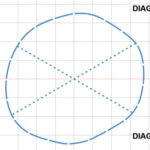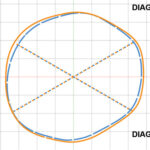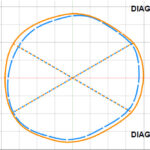Resource Category: For Parents
Typical Gait Development
Stabilizer Case Study
Transforming Patient Care: Case Study of Printed Cranial Remolding Orthosis (CRO)
When Milo’s mom, Olivia, first raised concerns about her 7-month-old’s head shape, his pediatrician referred her to a local orthotist for a cranial remolding orthosis. After hearing about traditional and 3D printed options, Olivia felt confident in choosing Surestep’s new Sprout3DTM helmet due to its lightweight structure, single-sided hinge opening (making it easier for busy parents to open with only one hand), the perforated foam for better ventilation, and a plagiocephaly-specific trim line.
Summary
After being measured by his clinician, Milo’s helmet was fabricated with top-of-the-line 3D printing technology, allowing for a quick turnaround time and a precise fit – resulting in minimal modifications.
Milo’s helmet journey was a breeze for both Milo and mom, with Olivia saying, “When I took my son to his pediatrician, she couldn’t believe how easy it was to take the helmet on and off. The unique snap-on feature was probably the most raved about in my circle of friends and family.”
Throughout the helmet journey, Milo went through a couple growth spurts and received quick adjustments with minimal modifications – providing ease and comfort for both Milo and mom. Thanks to Sprout3D’s breathable features, Milo stayed cool despite his hot nature, and Olivia was able to easily clean the helmet.
Results
With his measurements moving from moderate severity to the normal range, Milo successfully “graduated” with flying colors after only two short months! Olivia states, “I would recommend Sprout3D to anyone who is considering a helmet for their child. I truly could not have asked for a better experience for my son.”
November 7, 2024

December 16, 2024

January 6, 2025

Dynamic Cervical Orthosis: A Case Study
Introduction
The patient was born full term. She was 6 pounds 12 ounces and 19 ½ inches long. She left the hospital with mom two days after delivery. Prenatal history included nicotine use. An MRI had findings of periventricular leukomalacia. She had a negative genetic workup. Additional diagnoses included dystonia, esotropia, strabismus, dysphasia and reflux. She was placed on baclofen at age 1 year.
She started physical therapy at 14 months. She received aquatic therapy, physical therapy and vision therapy at home. During that time, no major gross motor skill gains were made and other interventions were considered. She was unable to roll or sit and had significant head lag with pull to sit and poor head control in any position. Her eyes were closed in any upright position. In side-lying, with her head supported, she would open her eyes and track objects.
At this time, it was determined that she needed head support in sitting to work on endurance and visual spatial, cognitive and social skills in a seated position. A Surestep Dynamic Cervical Orthosis (DCO) was used to facilitate external head support and control. The DCO was a good fit for her size and for the fact that it did not require an external chair for use.
Method
She utilized the DCO in her home daily for four weeks. Wear time ranged between 20 and 45 minutes per session. Her caregiver reported that during these sessions, she also worked on focused attention and play. This should be taken into consideration when looking at her fatigue levels.
Results
| Prior To Use | After 2 Weeks of Use | After 4 weeks of Use | |
|---|---|---|---|
| Range of Motion | Pectoral muscle protracted bilaterally. | Range increased to neutral, easier passive range of motion into protraction. | |
| Sitting | Would sit with bilateral upper extremity pedi wraps donned and placed in sitting position with tactile cures at upper lip for motivation to lift into midline. She could hold position with constant tactile cues for ten seconds prior to loss of balance or head falling into flexion. | She would sit with bilateral upper extremity pedi wraps donned and placed in sitting positon with maximum assistance at mid-trunk. With DCO and pedi wraps, she would bring her head up independently and hold for 10 seconds. | She would prop sit independently when placed for 5 seconds. |
| Eyes/Head Control | Would open eyes majority of the time when in side-lying or with head supported. She would hold her head in midline for 2 seconds. | Would keep eyes open in supported sitting with improved tracking. She would hold her head in midline for 5 seconds. | |
| Gross Motor | Would roll side to side but not completely into side-lying. | Would roll from supine to side-lying and almost into prone but is unable to clear arm to complete skill. | |
| Endurance | Would tolerate up to 20 minutes with DCO on in focused play. | Would tolerate 30-45 minutes with DCO on in focused play. |
